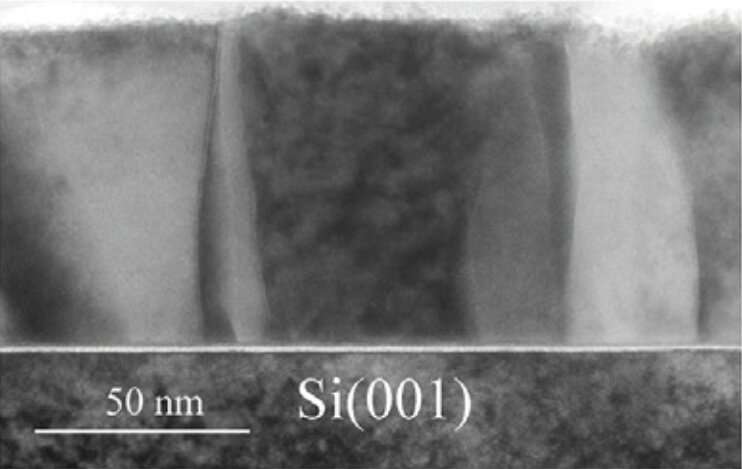Scientists close to integrating silicon electronics and spintronics

Scientists from Far Eastern Federal University (FEFU) and the Far Eastern Branch of the Russian Academy of Sciences (FEB RAS) developed the nanoheterostructure consisted of a nanocrystal magnetite film (Fe3O4) covering a silicon substrate with an additional layer of silicon oxide (SiO2/Si). Its magnetic and magnetotransport properties may help to design highly efficient hybrid semiconductor devices with new spintronic elements. The related article was published in the Journal of Alloys and Compounds.
The new nanoheterostructure is only 75 nm thick and of particular interest, as it can be used as a source of spin-polarized electrons for the semiconductor silicon substrate.
The authors of the work for the first time described optimal conditions for the formation of the films containing only Fe3O4 nanocrystals. The crystal lattice in these structures has certain preferred orientation against the Si-substrate called the crystalline texture.
"Reactive deposition has already been proven as an effective method for the production of nanofilms. In our work, we used the reactive deposition of iron in an oxygen atmosphere. We studied the effect of the structure and morphology of Fe3O4 nanofilms on their magnetic and electrical properties. We described the conditions under which the best films can be obtained and further used in devices operating on the basis of spin-polarized electron injection into silicon via an ultrathin layer of SiO2. The results of our fundamental research can, therefore, be widely used in applied physics," Vyacheslav Balashev said. Balashev is an engineer at the Department of Physics of Low-Dimensional Structures, School of Natural Sciences, FEFU, and a senior researcher at the Laboratory for Hybrid Structures, Institute of Automation and Control Processes, FEB RAS.
Electron spin polarization is much more effective in the new structure than in the films of other magnetic materials. This will help to create spin injectors for spintronic devices.
"Scientists from all over the world have been studying magnetic and conductive properties of Fe3O4 nanoparticles and thin films for two decades because of its theoretically predicted 100% electron spin polarization. This is a perfect property for spintronic devices that require pure spin current (a more efficient analog of electrical current) for their operation. The spin current is determined by the transfer of electron spin, not charge. Therefore, spintronic devices do not lose energy on Joule heating," Alexander Samardak, an assistant professor of the Department of Computer Systems, School of Natural Sciences, FEFU, commented.
According to the scientist, the high spin polarization of magnetite has not yet been confirmed experimentally, but there are some promising areas of study in this field, including the development of magnetite films with a given crystalline texture on semiconductor substrates. The crystal structure is what determines the magnetic and magnetotransport properties of nanofilms. All this research brings scientists closer to creating highly efficient injectors of pure spin current that may be used in hybrid devices based on semiconductors and magnetic materials.
"Modern electronics has almost reached its limits. It is impossible to further reduce the size of its functional elements due to a number of physical constraints. I believe that the integration of Si-based electronics and energy-efficient spintronics is just around the corner," concludes Alexander Samardak.
More information: V.V. Balashev et al, Crystal texture-dependent magnetic and magnetotransport properties of half-metallic Fe3O4 films grown on oxidized Si substrates by reactive deposition, Journal of Alloys and Compounds (2019). DOI: 10.1016/j.jallcom.2019.152398
Provided by Far Eastern Federal University





















